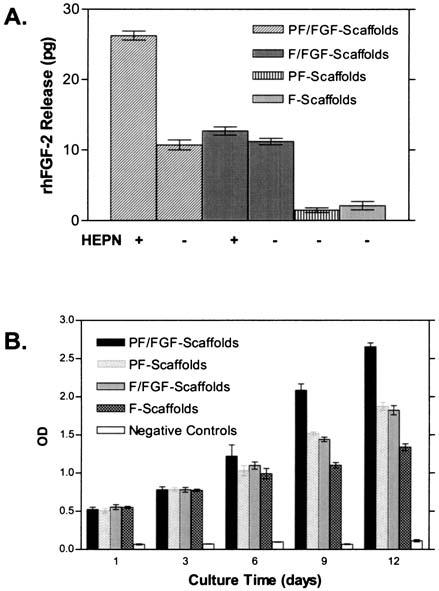FIG. 7.

(A) Heparinase release of FGF-2 from collagen I scaffolds. Collagen I fibril scaffolds complexed without (F) or with (PF) PlnDI were constructed and nonspecific protein-binding sites were blocked with BSA as described in Materials and Methods. FGF-2 bound and released was evaluated after treatment with or without heparinases I, II, and III (HEPN) as indicated. PBS and F/FGF-scaffolds were treated with HEPN. PF-scaffolds and F-scaffolds not preincubated with FGF-2 were used as negative controls. FGF-2 released to the medium was detected in a sandwich ELISA as described in Materials and Methods. The bar graphs reflect means ± SD of triplicate determinations in a typical experiment. (B) MG63 cell proliferation in collagen I scaffolds. Scaffolds were formed with collagen I fibrils only (F) or in conjunction with PlnDI (PF) and subsequently complexed without or with FGF-2 (FGF) as described in Materials and Methods. These scaffolds then were seeded with MG63 cell suspensions (2 × 105/mL) in DMEM supplemented with 5% (v/v) FCS. Cell-seeded scaffolds were transferred to 24-well plates and incubated in DMEM containing 1% (v/v) FCS. Collagen I scaffolds without cells were used as negative control. Scaffolds were collected at the indicated times postseeding and cell proliferation was determined by BrdU incorporation assay. The results reflect means ± SD of triplicate determinations in each case.
